Whitehorse, YT
As a rule, we shun cities and towns. We enjoy healthy foods and rarely eat in restaurants (and are usually disappointed). No, our RV travels seek to experience sweeping vistas, wild territories, lonesome countrysides, and always the road less traveled. That said, there are some towns that are iconic for their region, and Whitehorse certainly is one of those. We can’t just scoot on by the self-proclaimed hub of the northern wilderness without mention.
We’ve spent three nights in (near) Whitehorse, and we’ve gotten to know some of the highlights of its surrounds. We’ve spoken with many residents, workers, and tourists like ourselves, and gotten an idea of the lifestyle here — but in fact we have probably just scratched the surface. Some folks are seasonal workers, some live here year-round (and say they don’t mind the winters). Our fellow visitors this summer are a polyglot from all over the world. Whitehorse, at 27,000 or so, is ten times the population of almost any other town you can name within 500 miles or more. So it’s true, everybody comes here to “do business”, and it is also a main crossroad point for northern roads.
Here is the map view:
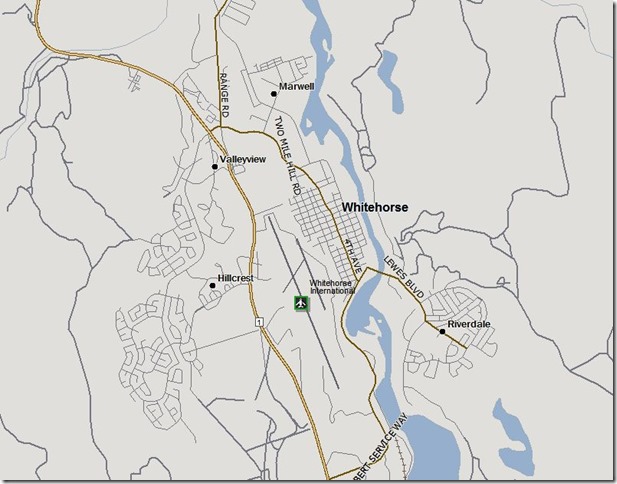
And one from ground level, same point of view — the highway coming up from the south into 2nd Avenue.
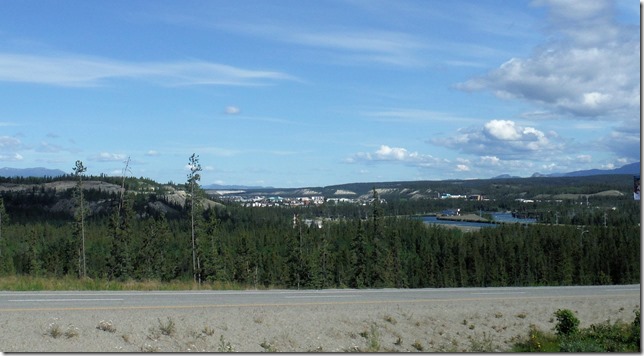
As you can see, it’s nestled up against the Yukon River, which is one of the reasons for its long-term success. The Yukon River is a huge waterway and was a primary means of transportation in the north. From early trapping days, the river was used to transport goods and people over the immense distance between Whitehorse and the Bering Sea. Unimaginable as it may seem, this twisting watercourse, flowing toward every point of the compass at one point or another, was a supreme corridor in its day. It was essentially the flattest, smoothest route available despite its inefficiencies and hazards. Sleds were used in winter and boats and ships in summer. In fact, big sternwheelers plied the river well into the 1950’s.
Whether for exploration, hunting/trapping, or mining, the North continuously developed around the various (incredibly difficult and dangerous) means of transportation available. Trails, roads, lakes, and rivers all had their risks and it was common for accidents and deaths to occur on a regular basis.
A noteworthy member of the transport milieu was the SS Klondike, a 217-foot flat-bottom steam-driven stern-wheeler that operated all the way to 1957. The ship has been restored and is on display at the southeast edge of Whitehorse. It’s nicely set up with representative cargo, original engines and accommodations, and is well worth a visit. As always, I find myself surprised or astonished at what could be done with iron-age technology and a LOT of hard work.
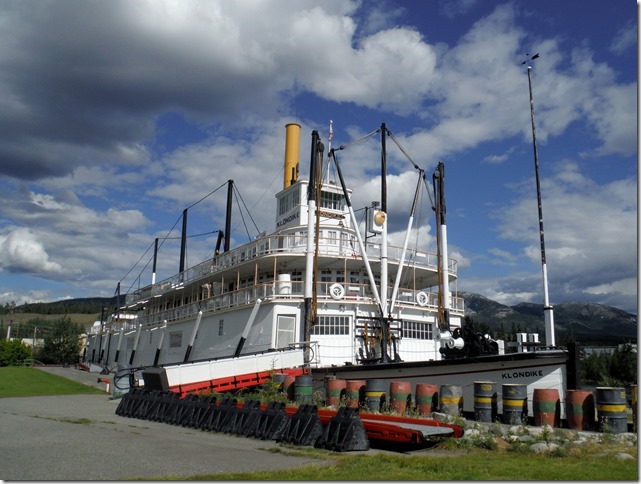
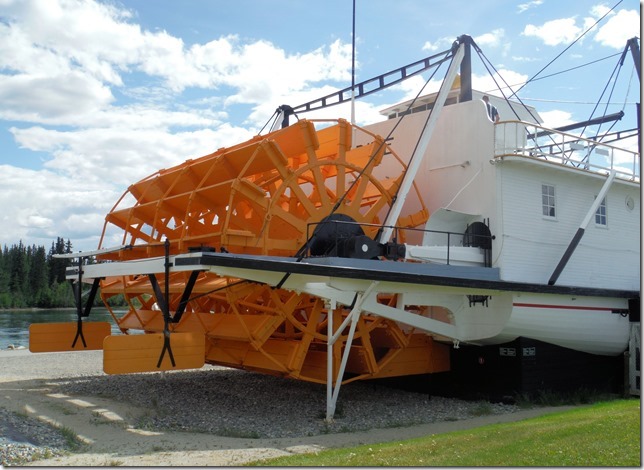
This is a winch, but a very specialized one. Look at the front of the ship – see the two vertical “masts” at each corner? Those masts were removed from their positions, chained to the sides of the bow, and the winch was used to pull the masts downward against the bottom of the river/lake. This would raise the bow slightly and “pole” the ship backwards. Such was the method used to recover the ship from grounding on a sandbar. Each winching operation would move the ship 3-6 feet backwards.
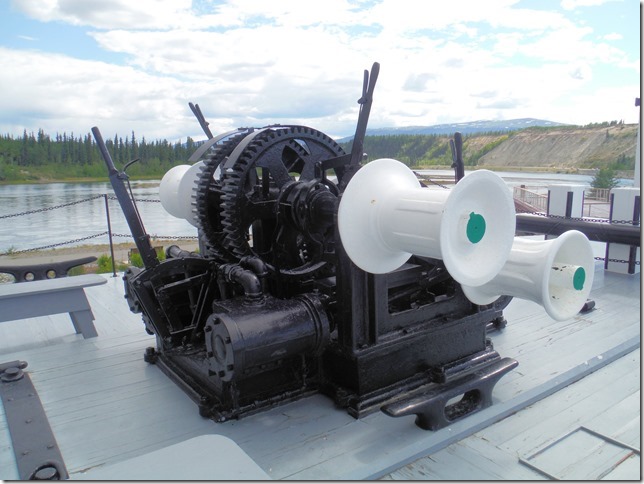
Steam-powered rams drove huge laminated steel/wood beams out the back to turn the gigantic paddle wheel. This little puppy could transport 300 tons of cargo along the tricky waterways of the north.
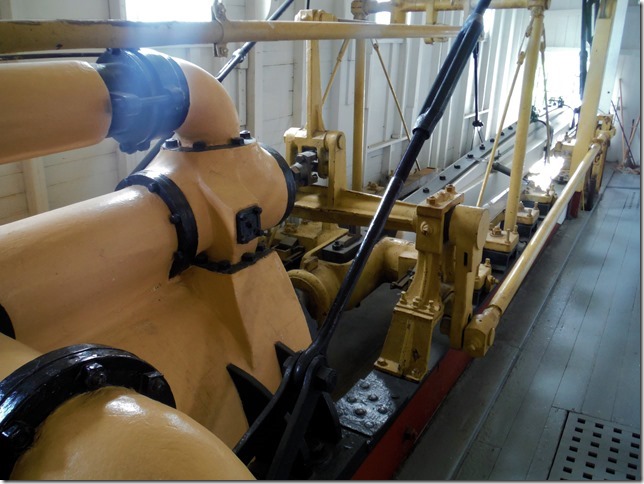
Lower deck cargo, upper deck (first-class) dining area.
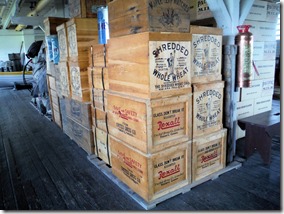
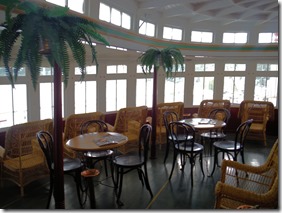
Whitehorse visitors center is first-class, indispensible. Top-notch unlimited wifi, free parking, knowledgeable folks on duty 8-8. This was the ONLY place with wifi good enough to publish a blog post.
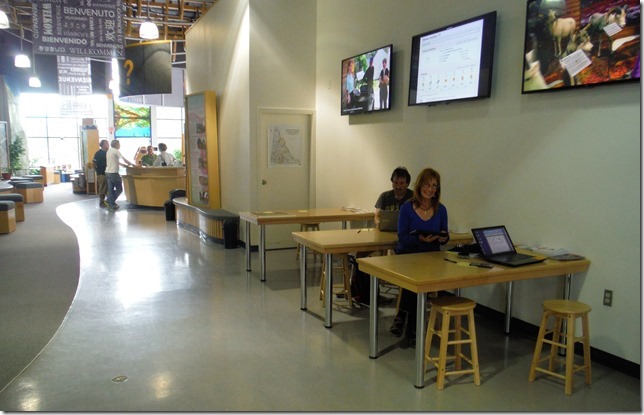
Some cool old buildings lingering around the downtown area, such as the three-story “log-skyscraper”. You kind of have to seek them out, because they’re surrounded by modern stuff.
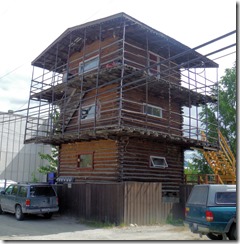
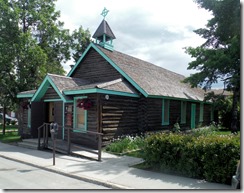
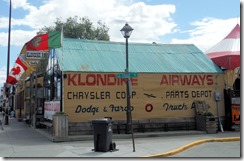
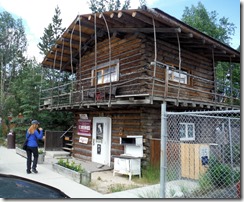
Whitehorse has the usual amenities (welcome after long miles with few “real” stores). Besides the Walmart, etc., there’s a place called Canadian Tire which is kind of a mix of Home Depot, Ace Hardware, and O’Reilly Auto. Could’ve spent hours there…. talk about a great place to while away the winter, huh?
South of town a few miles, the Yukon River hosts a river-side seaplane base. It’s a casual affair, with multiple buildings and docks lined up for at least a mile or so. In this water-wonderland it’s not difficult to understand seeing a great many “pure” seaplanes — not amphibians with floats and wheels like we occasionally spot in California, just floats only. This is a land where there’s more water than asphalt, by a long shot. I’m going to guess that they get fitted with skis in the winter – or maybe just stored away.
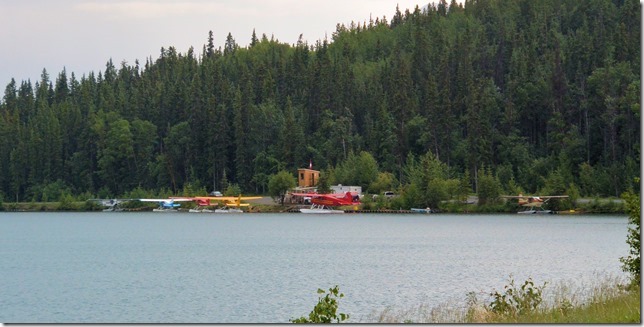
Our camp site (Wolf Creek) is pretty nice, and most sites have direct access to the creek like ours did. We stayed three nights here (on our annual pass).
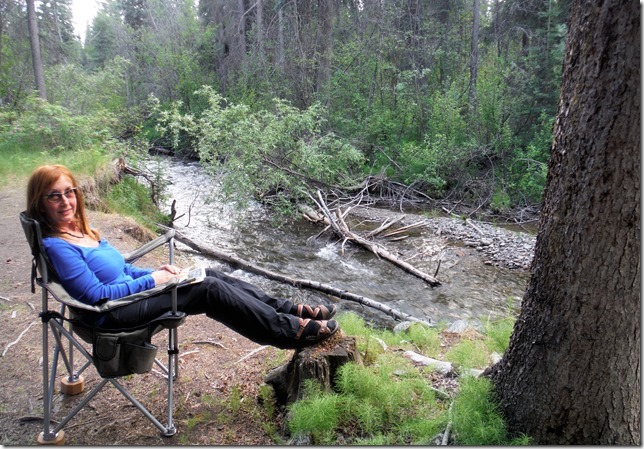
It also has a pleasant hiking path that winds through the forest and along both the Yukon River and Wolf Creek itself. As with all the hikes we’ve taken in Canada, it’s a simple path, with little grooming – a walk in the wild, so to speak. Stoking through the woods is SO much better than pumping iron at the gym – hiking is our preferred “workout”. This shot is not the actual path, but a pair of blow-downs off to one side. They span the creek (I’m sitting above the waters).
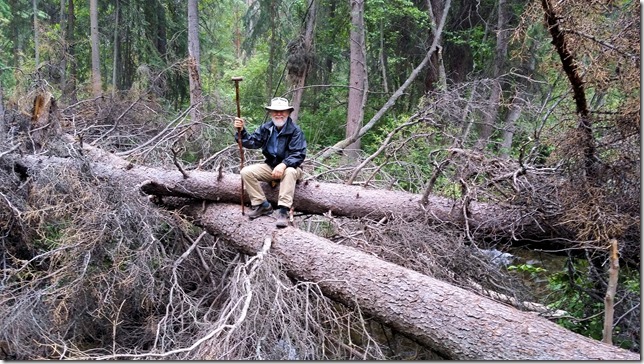
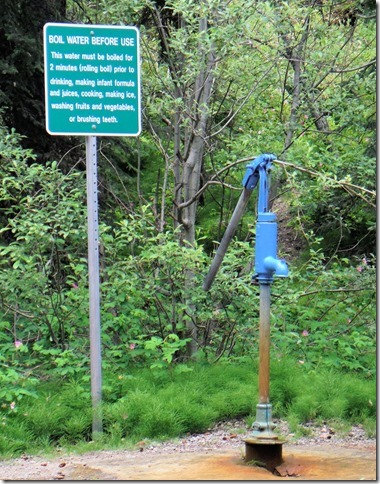
Sad to say, this is too-common a sight in the forest camps. There have apparently been a few cases of E. coli illnesses, and the entire territory is placarded like this. Since we never know whether it’s a real problem or just-be-safe governmental prudence, we are being super-careful about water. We always double-filter our water, but that won’t eliminate some types of contamination. Obviously, boiling up 50 or 60 gallons to put in our fresh-water holding tank is just not an option. I’m going to have to look into alternatives (UV light, chlorination, etc.) sometime so that we can guarantee our water purity. For now, we fill our tanks from known-good sources, and we double-filter it anyway.
A red fox slipped by one evening, just trotting along the access road.
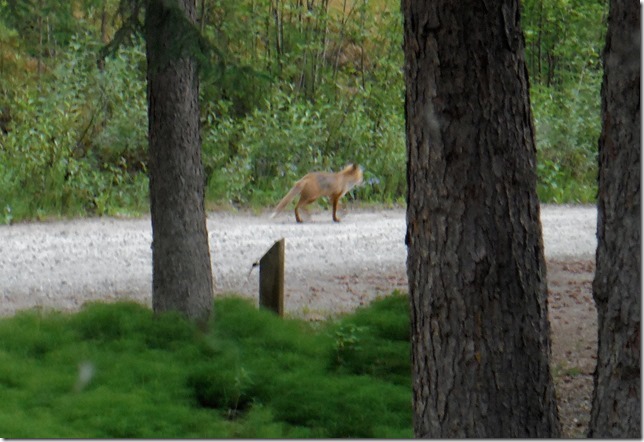
Miles Canyon was worth the side-trip, just a few miles away from our camp. Deep cut by the Yukon River through solid lava flows, used to be deeper before the hydro dam raised the river level. The white suspension bridge moves sideways about 3-4” when you walk it, just a wee bit unnerving for some folks but perfectly safe.
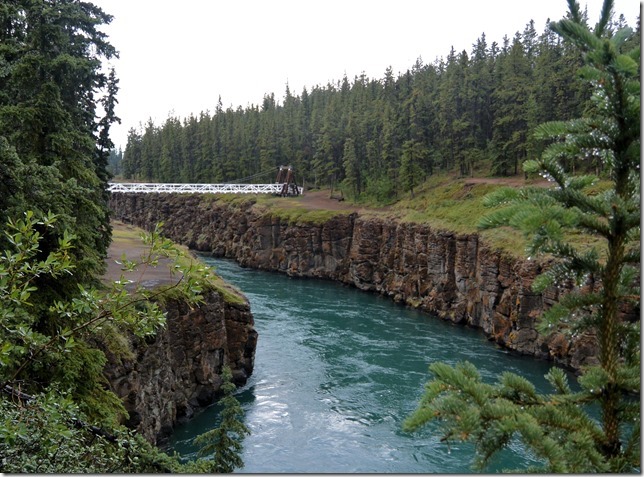
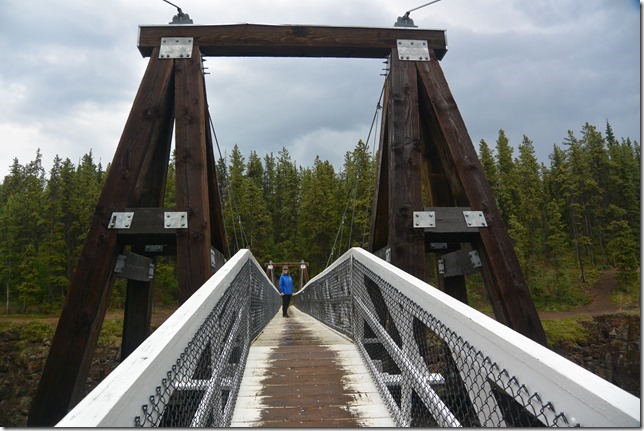
In the “last but not least” department: This little display was near the stern-wheeler exhibit. We were tempted, and we succumbed. The passing teenager who took the picture was smiling too. What more can we say?
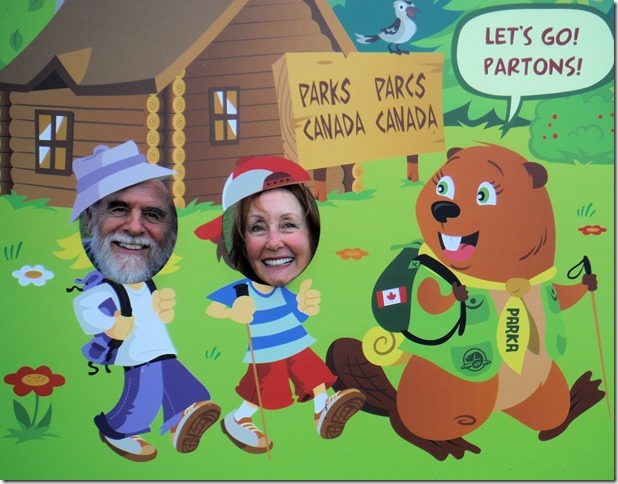

Using UV light to sterilize your water?!?!
What a GREAT idea!
Wow, had I thought of that I would have totally suggested it to you guys.
🙂
🙂
🙂
Love you guys!
Wonderful pictures and write-up. It looks like you are having fun- KEEP IT UP.
Great pics and thanks so much for sharing the greta stories also.Be safe and have a great trip!——John L.
another prime story …
note: in 1976 at white horse airport we took off in a formation of 7..
to Norway ( just over the border) the runway was used in WW2 for bombers
at least 200′ wide and 2 miles long!!
up to caribou country..
take care..tony/marlene
Loved this edition…you should have been a teacher….
HI both of you……….Wonderful tales and pictures (the last – real cute -makes me feel not so far away). Loveyou both and I’ll try to call tomorrow (Father’s Day) to wish both Grampa and Gramma a wonderful day. Mom